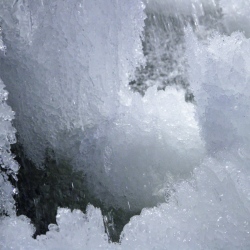
University of Washington researchers figured out how to make a laser refrigerate water and other liquids under real-world conditions. Researchers used an infrared laser to cool water by about 36 degrees Fahrenheit, a significant breakthrough in the field. The discovery could help industrial users “point cool” specific tiny areas with a focused point of laser light.
Microprocessors, for instance, might someday use a laser beam to cool specific components in computer chips to prevent overheating and enable more efficient information processing.
Scientists could also use a laser beam to precisely cool a portion of a cell as it divides or repairs itself, essentially slowing these rapid processes down and giving researchers the opportunity to see how they work. Or they could cool a single neuron in a network, essentially silencing without damaging it, to see how its neighbors bypass it and rewire themselves.
The laser refrigeration process is currently quite energy intensive, Pauzauskie said, and future steps include looking for ways to improve its efficiency. One day the cooling technology itself might be used to enable higher-power lasers for manufacturing, telecommunications or defense applications, as higher-powered lasers tend to overheat and melt down.
“Few people have thought about how they could use this technology to solve problems because using lasers to refrigerate liquids hasn’t been possible before,” he said. “We are interested in the ideas other scientists or businesses might have for how this might impact their basic research or bottom line.”
